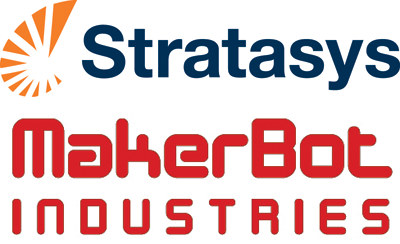
Call us wrong on this one. The other week we suggested it didn’t make much sense for Stratasys to purchase MakerBot, in spite of rumors. Regardless of our analysis, simultaneous press releases from both companies this afternoon say a deal has in fact been made.
The deal, set to close in Q3, is a stock swap where MakerBot will merge with a Stratasys subsidiary and operate separately, “maintaining its own identity, products and go-to-market strategy”.
Our previous analysis listed reasons why the deal didn’t make sense. Let’s revisit those and see what’s changed:
- Stratasys has shown zero interest in addressing the consumer market thus far: Evidently this is no longer true; Stratasys must see this acquisition as a way to further expand their business and keep up with 3D Systems, their main competitor.
- Stratasys’s business culture could not be farther away from MakerBot’s free-wheeling open source heritage: Still very true, but by operating MakerBot independently, Stratasys makes a wise choice to retain the MakerBot buzz machine.
- Stratasys is already busy integrating their previous acquisition, Objet: Again, by operating MakerBot independently they stay clear of contention with any remaining Objet operations.
- Stratasys’s business model involves sole-source premium-priced plastic filament, while filament sales are peripheral to MakerBot’s business model and in fact, MakerBot’s machines accept any filament, including low-cost generic products: This we must watch carefully. Will the new MakerBot change its stance on filament? Will they introduce proprietary cartridges as many other manufacturers have done?
- MakerBot CEO, Bre Pettis, has publicly stated “We’re going nowhere” when asked about such an acquisition: A true statement, but misleading. Pettis was correct in saying “going nowhere”, because Stratasys will operate MakerBot independently. They will remain the same, at least for now.
- MakerBot has just opened a new factory, demonstrating long-term intention to continue manufacturing units: Factory operations will also be separate, it appears. However, we could see Stratasys integrating MakerBot manufacturing at a future date to increase production or achieve efficiencies.
- MakerBot is too small to significantly change MakerBot’s bottom line: Evidently Stratasys believes personal 3D printing will increase significantly – or they believe the professional market (architects and designers) will be their focus for the future.
Stratasys will be a consumer company for the first time. They have little experience in this market, but will lean heavily on MakerBot’s existing marketing strategies. Stratasys will also own a retail store for the first time.
While this is a big change for Stratasys, it’s a bigger one for the 3D printing industry. We now (or at least after the merger) will have two giant companies each providing consumer-based 3D printing gear. The inevitable result: competition, better products and much more rapid progress.
Let the battles begin!
[UPDATE] AllThingsD reports the deal is for an astounding USD$403M in shares, with another USD$201M to come if certain unstated performance targets are met. This is a pretty sweet deal for those who invested a “mere” USD$10M in MakerBot only last year.

